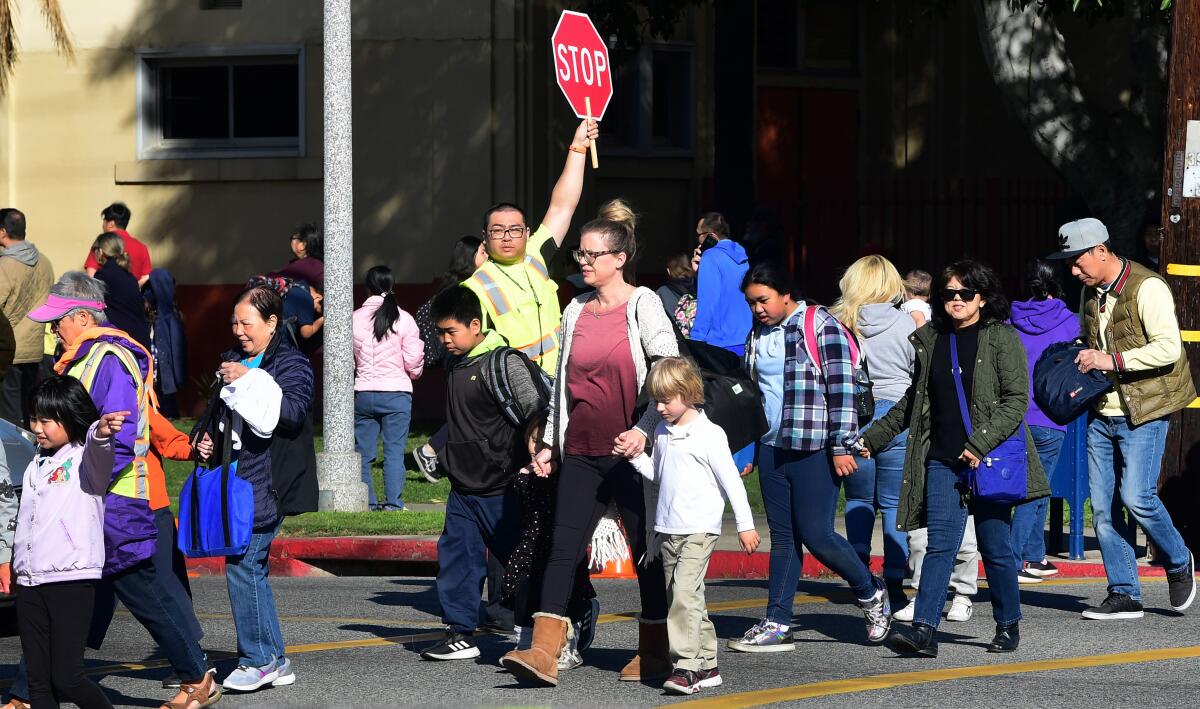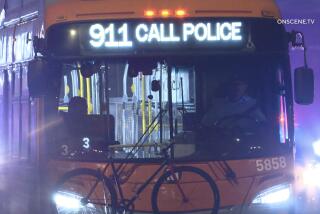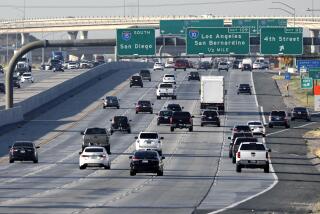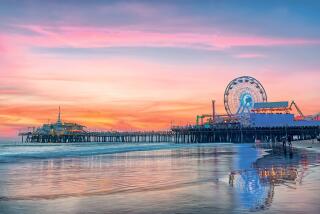Commentary: Are L.A. drivers suddenly more OK with endangering lives?

- Share via
It’s an immutable truth of car culture: Something about sitting behind a steering wheel can turn a reasonable person into a borderline psychopath, willing to threaten the life of anyone in the way.
Cars are our id empowered by motion and heavy metal, a reality I’ve experienced on Los Angeles’ streets not only as a driver, but as a pedestrian and cyclist. On your feet or a bike, your existence is acknowledged only when it’s in a driver’s path; otherwise, they seem completely indifferent to your survival.
This has been true for as long as I remember, especially in car-centric Southern California. But something’s changed since the pandemic started, and not for the better. The numbers bear this out — traffic deaths, for example, hit a two-decade high last year in the city of Los Angeles.
Distressing as that is, it still doesn’t capture how much more chaotic local roads have felt since the resumption of “normal” life after the pandemic.
I liken this realization to the difference between knowing in early 2021 that COVID-19 deaths were surging, and actually watching a horde of conspiracy theorists shut down the vaccine clinic at Dodger Stadium. The gut punch comes from seeing the numbers manifested in galling human behavior.
And with drivers, I’ve seen a lot of it lately.
Recently, I was crossing a busy street (yes, in a crosswalk) with my dog Moby when a driver stopped to scream that she couldn’t see me. Moby and I had nearly reached the other side and were at least 30 feet from this driver’s lane, so I don’t know if she was just blowing off steam shouting at a pedestrian so far out of her way. I’ve seen a lot, especially in this sketchy crosswalk. But a motorist stopping to complain about my visibility and then resuming her journey — that’s new.
I’ve been honked at for pulling into my own driveway. This tends to happen after I drop my kids off at school, and Waze or Google routes some harried morning commuter through my narrow residential street. I can only guess these drag racers expect me to risk crashing into my kitchen if it allows them to continue accelerating toward the stop sign a few seconds away.
And speaking of morning drop-offs, school zones have come to represent our decline as a motoring civilization. In recent weeks, I’ve seen the lone crossing guard posted at my kids’ school practically throw himself into traffic to make drivers obey the red light. It’s as if the very presence of children antagonizes people driving around schools.
Of course, this is all anecdotal evidence. But this age of horrible driving stands out from a lifetime of experience with close calls and, yes, crashes on the streets of Los Angeles. It also comes amid overdue discussions on road designs that prioritize automotive convenience at the expense of everything else. The average weight of an American car now exceeds 4,000 pounds. Particularly concerning are the faster, quieter, monstrously heavy electric trucks and SUVs coming onto the market.
In a country that measures its freedom with the price of gasoline, any talk of regulating the ability of drivers to operate their cars as weapons falls on deaf ears. Here, Tesla owners with so-called Full Self-Driving can continue experimenting with their cars and everyone’s lives even amid a safety recall.
So where should we go from here, in a society where the easy availability of dangerous technology has outpaced its ability to adopt appropriate regulations and more humane behavior?
Here’s one modest, probably unworkable proposal: Make new drivers take a temperament assessment along with the multiple-choice test on the rules of the road. Why not deny driving privileges to people who have anger management problems, until they show they can control themselves while operating deadly three-ton equipment?
Or alternatively, we could engage in universal social shaming of drivers who refuse to consider the safety of people around them. That may be unworkable too, but at this point, I’m ready to try it.
More to Read
A cure for the common opinion
Get thought-provoking perspectives with our weekly newsletter.
You may occasionally receive promotional content from the Los Angeles Times.










